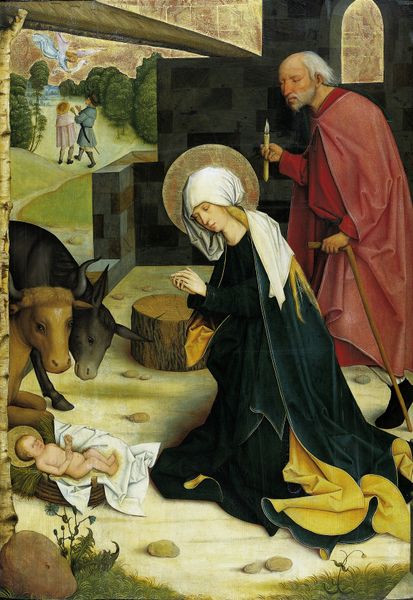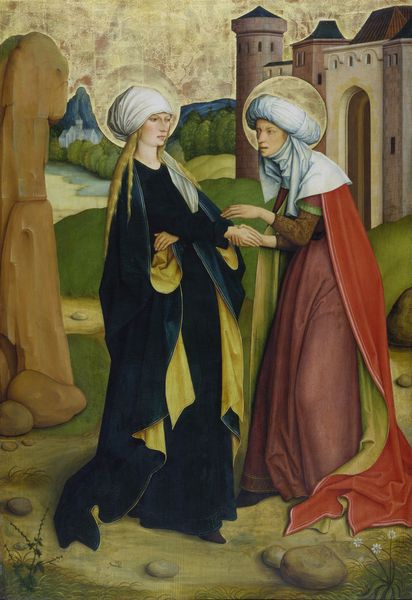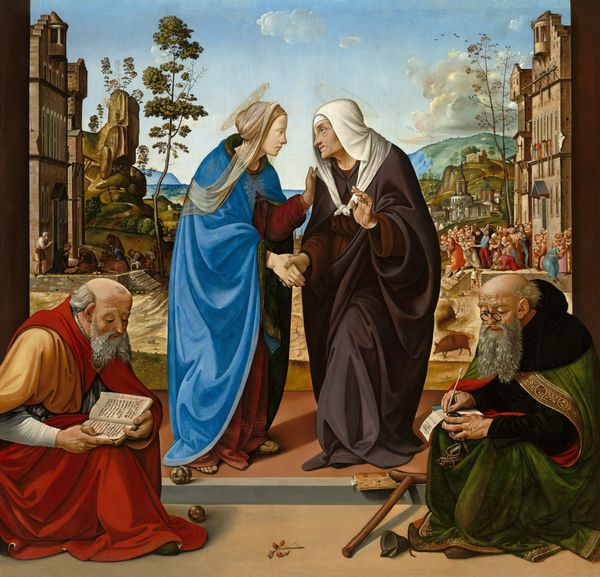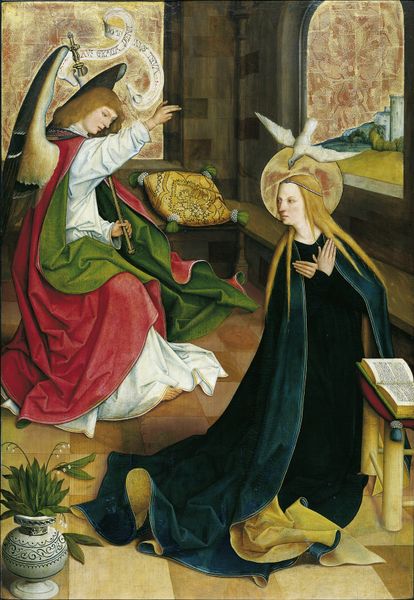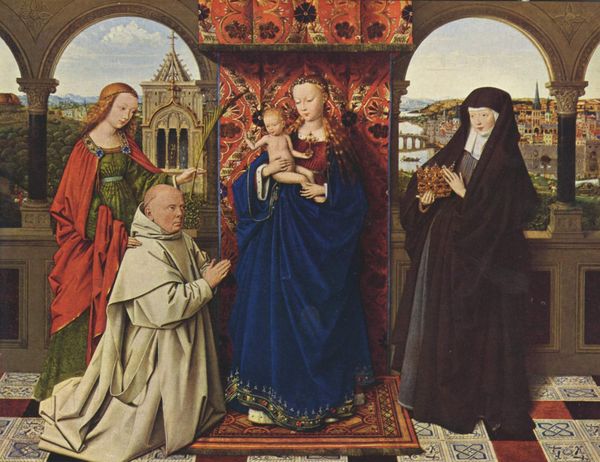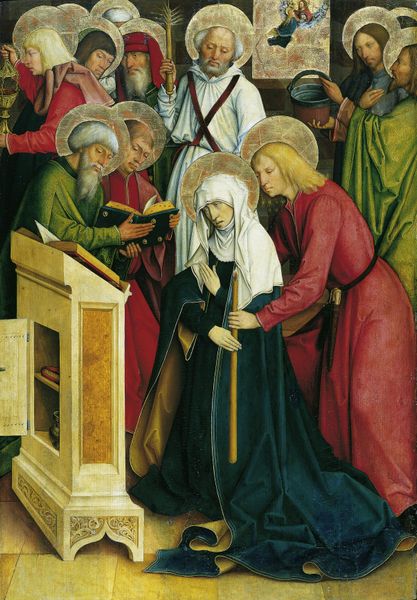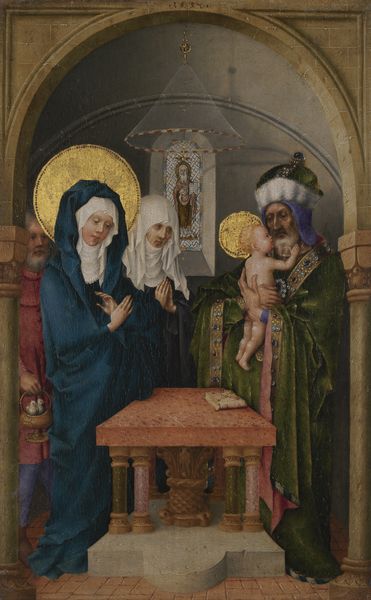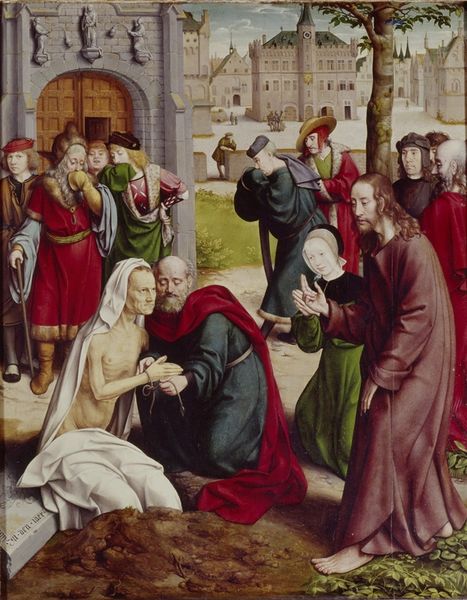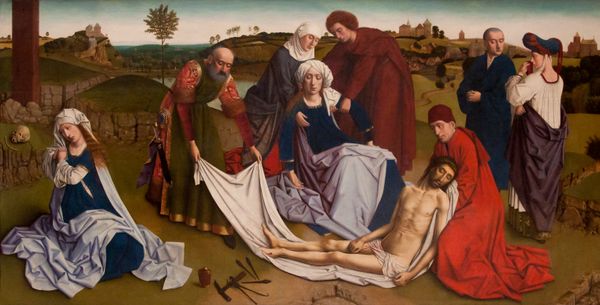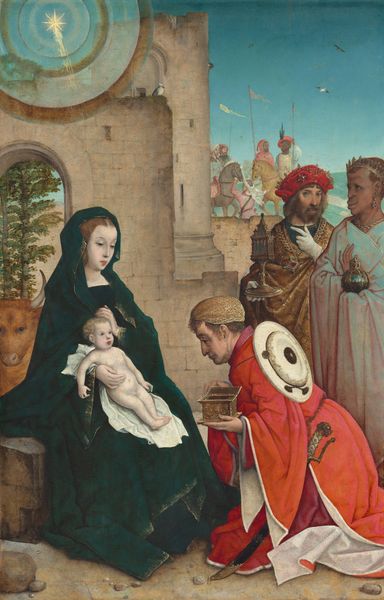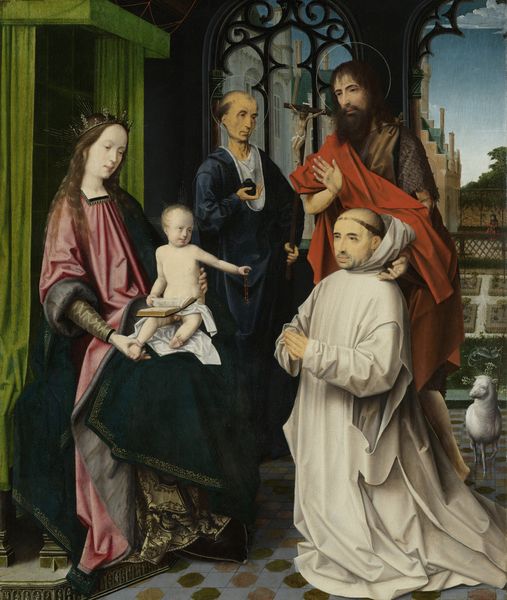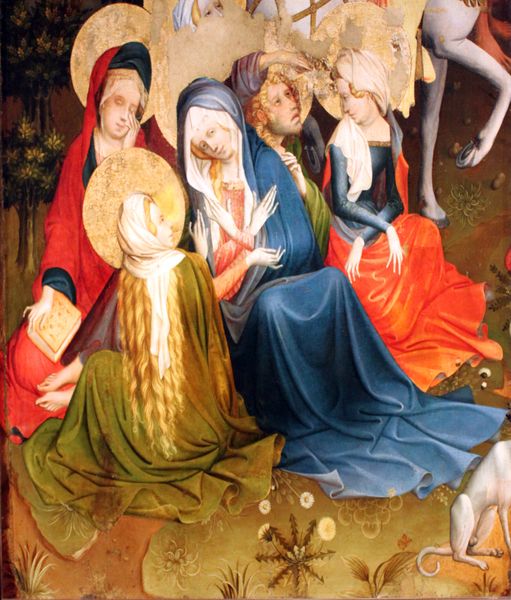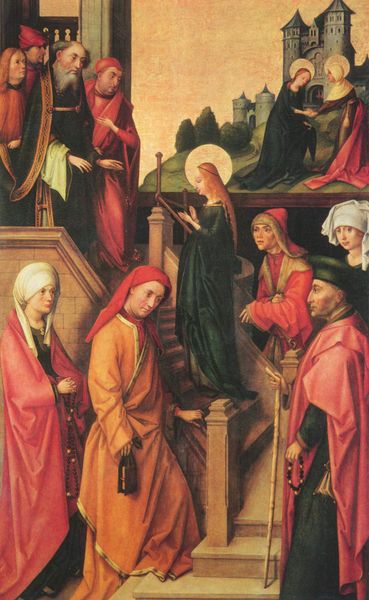
Pfullendorf Altarpiece: Annunciation, Visitation, Nativity, Death of the Virgin c. 1497 - 1503
0:00
0:00
panel, tempera, oil-paint
#
portrait
#
woman
#
medieval
#
panel
#
narrative-art
#
tempera
#
oil-paint
#
handmade artwork painting
#
oil painting
#
jesus-christ
#
child
#
13_16th-century
#
12_15th-century
#
history-painting
#
early-renaissance
#
miniature
#
angel
Copyright: Old Masters 1300 - 1800
Editor: This is the "Pfullendorf Altarpiece: Annunciation, Visitation, Nativity, Death of the Virgin," made around 1497 to 1503. It looks like oil and tempera on panel, and the whole piece has a serene, almost detached feel. What draws your eye in this work? Curator: The four panels offer a condensed visual narrative, rich in symbols. Look closely. The Annunciation isn’t just about the angel’s visit; the dove above Mary’s head, the book, the vase of lilies – each element carries meaning related to purity, prophecy, and divine grace. Notice any repeated themes or objects across the panels? Editor: Well, Mary is in all of them. And everyone seems to have a halo, even the baby Jesus. Is that common? Curator: Yes, absolutely. Halos denote holiness, marking sacred figures for the viewer. Consider how Mary's emotional state seems understated. Where might those emotions be displayed instead? Editor: Maybe in her body language? She is kneeling in the Nativity scene. The composition feels…formal, I guess? Curator: The formality directs our gaze and guides our understanding of each scene as part of a larger story of salvation, mirroring how these stories might have been read in sequence. The artist prioritizes theological clarity and moral instruction. Do you see any continuity, linking past, present, and future in these panels? Editor: I guess that each event is leading up to the last, with Mary's death. This altarpiece tells her whole story, right from the beginning! Curator: Precisely! The cultural memory of Mary as mother, intercessor, and symbol of faith is powerfully conveyed. This work embodies an era's devotion, condensed into potent imagery. Editor: It is amazing how much symbolism is packed into this piece. I never would have noticed on my own!
Comments
stadelmuseum almost 2 years ago
⋮
The Städel owns four panels of the work which gave this anonymous master his name; the others are in the Staatsgalerie Stuttgart. In closed condition, the large, winged altarpiece showed scenes of Christ’s Passion, and after its first opening, images from the life of the Virgin, among them the Frankfurt panels. The second opening revealed the sculpture shrine. The luminous colours and the dramatic depths of the perspectivally rendered space were typical of painting in Ulm around 1500. The same applies to the elongated figures with their somewhat stereotypical faces.
Join the conversation
Join millions of artists and users on Artera today and experience the ultimate creative platform.
